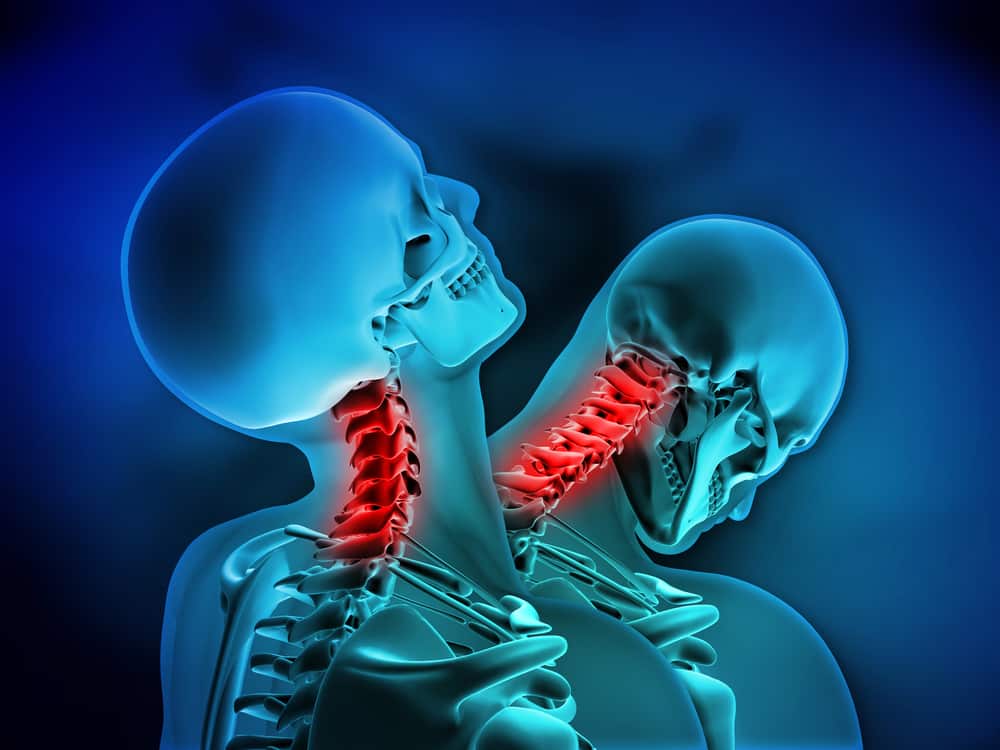
What Is Whiplash?
Whiplash is a general term for injuries to the neck that occur after a sudden, violent motion that causes the head to move back and forth very quickly. It is one of the most common back and neck injuries caused by car accidents. When a car is hit, especially from behind, a passenger’s head often jolts forward and then backward at an unnatural speed and positioning, causing a lot of stress to the cervical spine. In addition to the spine being moved abnormally, the tissues in the neck are stretched beyond their usual capacity, which can lead to strains or even tears. This same effect can occur due to other high-impact incidents like contact sports, rollercoasters, or bungee jumping, though this is rarer.
These strains in the soft tissue lead to a number of symptoms, most commonly neck pain and stiffness. Depending on the severity, the discomfort can be anywhere from very mild to debilitating. Most people also have trouble with a reduced range of motion, neck instability, and pain in surrounding areas like the neck and shoulders. Some people experience a tingling or numbness in addition to these symptoms.
While whiplash typically heals without any invasive treatment, it can lead to chronic pain if not cared for properly.
Diagnosing Whiplash
In many cases, symptoms of whiplash do not appear immediately after the car accident injury occurs. After a car accident, adrenaline begins pumping and many people experience shock, causing their body to suppress painful symptoms for hours or even days after the event. Because of this delayed symptom effect, many people do not notice signs of whiplash for days, even though the injury has been present since impact. This can give the injury time to worsen before it is treated. It is also best to seek care immediately to catch issues early and begin whiplash treatment as soon as possible.
When you visit a doctor after a car accident, whiplash will likely be one of the first things they are looking to identify. This is usually done through a discussion of your accident and a simple physical evaluation. However, in order to rule out other serious injuries or determine the exact injury you have sustained, many car accident clinics rely on diagnostic imaging like MRIs.
An MRI, or magnetic resonance imaging, is a form of imaging that uses radio waves and magnetic fields to produce detailed images of tissues and organs in the body. While whiplash does not have a definitive appearance in MRIs, they are useful for diagnosis. First, MRIs can rule out things like fractures, slipped discs, or other severe injuries that may cause pain, allowing doctors to determine whiplash as the primary injury to treat. An MRI image will also allow a doctor to get an early view of your spine and tissue to begin whiplash treatment and other protocol early on in the process, giving you a better chance of avoiding long term complications.
Once an MRI has ruled out other injuries and created an image of your spine, your doctor can begin developing a whiplash treatment plan that fits your needs. This may involve chiropractic adjustments, physical therapy, pain management, or other techniques to address the neck strain and help the body heal as needed.
Why Seeking Whiplash Treatment Matters
Even though an MRI will not immediately identify whiplash, it is important to seek care after an accident for what you can learn. Diagnostic imaging can rule out serious injuries, or even life-threatening conditions like internal bleeding, and give you a head start on treatment. Patients who seek early care are less likely to suffer chronic pain as a result of whiplash. If you have been in a car accident, contact AICA Orthopedics to set up your first appointment. Our team of specialists will walk you through diagnosis, make use of our imaging center, and create a customized treatment plan designed to help you recover quickly.
